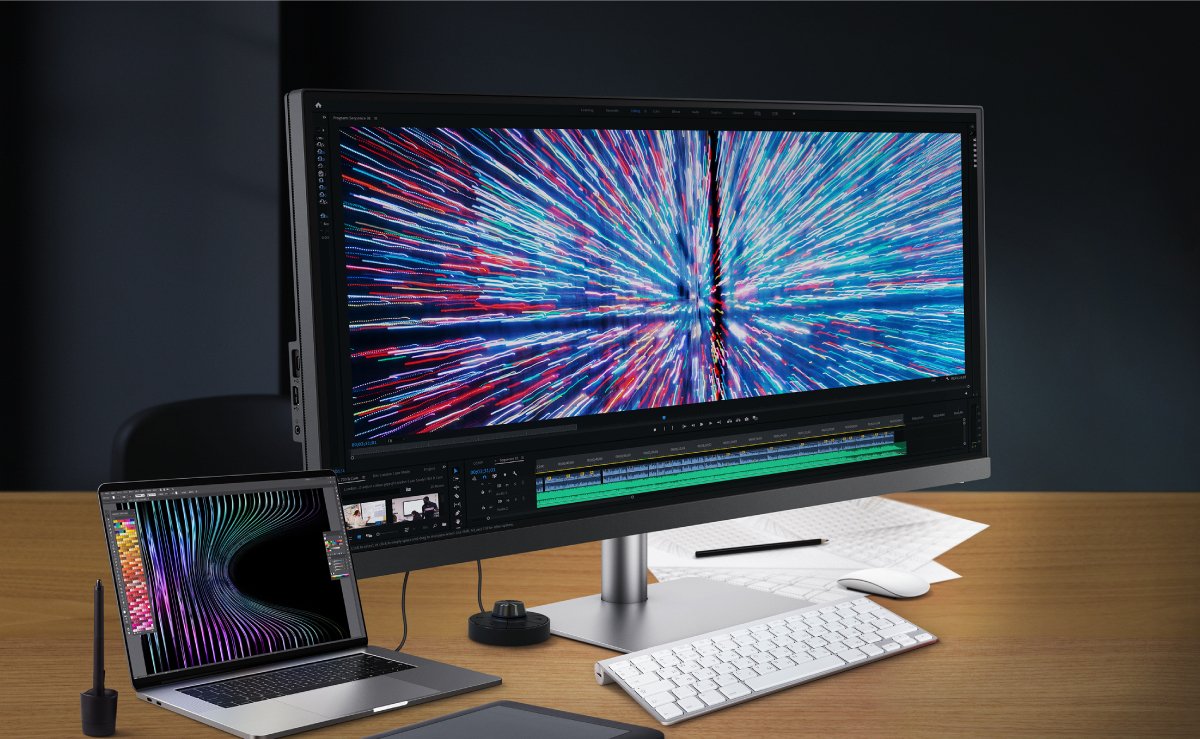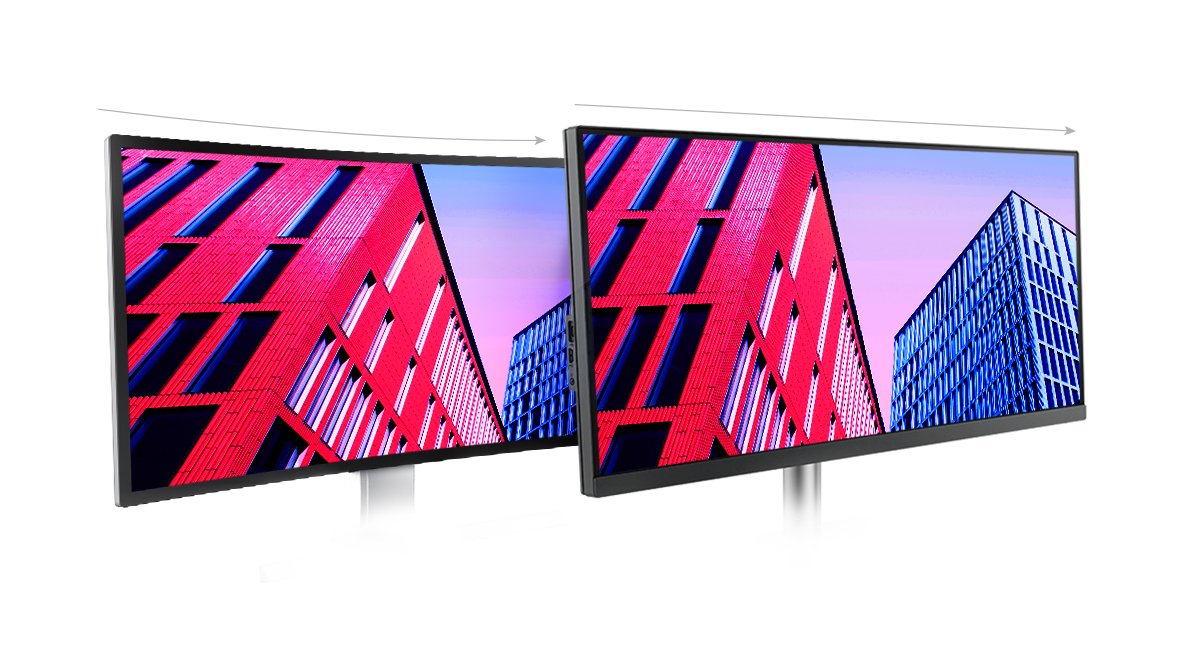


As a creative professional, multitasking might be part of your everyday work scenario. Communicating with your clients and coworkers, image-referencing via a web browser, working on your project with Adobe Photoshop or Premiere, checking your image gallery, and so on. And as we discussed in this article, an ultrawide may be your perfect solution if you need more screen real estate for multitasking. But, if you decide to buy an ultrawide and aren’t sure whether to go curved or flat, this article is for you
What distinguishes an ultrawide from a standard monitor is mainly the 21:9 aspect ratio, effectively adding an extra 33% screen to the display area. Still, whether going curved or flat, there’s more you need to know in order to get the right monitor for your design workflow.
Search on the internet and you will find that curved monitors are dominating the ultrawide display market. That domination applies to grassroots coverage online as well as to actual availability from most brands worldwide. A curved ultrawide seems to be a perfect combination. It is wider than a “standard” 16:9 monitor (with a 21:9 aspect ratio), and thus accommodates more content and applications. Curved screens make it possible to wrap displays around more of your field of view for better immersion. However, would a curved ultrawide make a suitable display for designers? Or, can a flat ultrawide do better? This is an interesting point that designers should learn more about before making a purchasing decision.
Whether curved or flat, an ultrawide offers extra screen workspace for multitasking. When it comes to curved models, the main benefit is the immersive visual experience, and almost all major display brands promote this aspect.
Human beings need to turn their heads around to see, especially for objects out of our field of view. Both flat and curved ultrawides cover a wider field of view to better accommodate human sight, so our eyes capture more screen space with every glance. Curved displays do better by wrapping around the viewer and thus create quasi-picture-perfect visuals: images on curved displays appear larger and more realistic and thus bring a more immersive experience to viewers. Also, due to screen curvature, the human eye stays at the same distance from each pixel and viewers can take in the content without turning their heads around, leading to less eye and neck strain.
Therefore, a curved screen works great for gaming and entertainment purposes, where users benefit from better immersion. It’s also good for office work thanks to greater eye comfort and wider visual perception.
You need to give a curved ultrawide a second thought if your ultrawide is meant for design work. As a designer, whether graphic design or industrial design, you need to make sure what you see on-screen comes out with great accuracy as an actual product or object. As such, a flat ultrawide might be a better choice for you since precision is the keyword that dominates your design work.
As most designers are heavy users of monitors, spending time getting accustomed to a curved monitor means loss of time and work efficiency. A flat monitor requires no such lengthy adjustment period. Therefore, a straight line always remains straight, requiring no guesswork regarding what you’ve drawn and no doubt due to distortion. Also, when it comes to viewing angles, curved displays only have one sweet spot: the center of the monitor. That means when you stray away from it, what you see on the curved display is in effect distorted. This will not happen with a flat ultrawide monitor, as wherever you sit, you see every image as it is, without distortion. You can use flat monitors to do video-editing as well for a better idea of what every frame will look like during the preview.

To sum up, if you pay a lot of attention to color and image precision, flat ultrawides might be a much better choice. You can then focus on your design work with great efficiency.